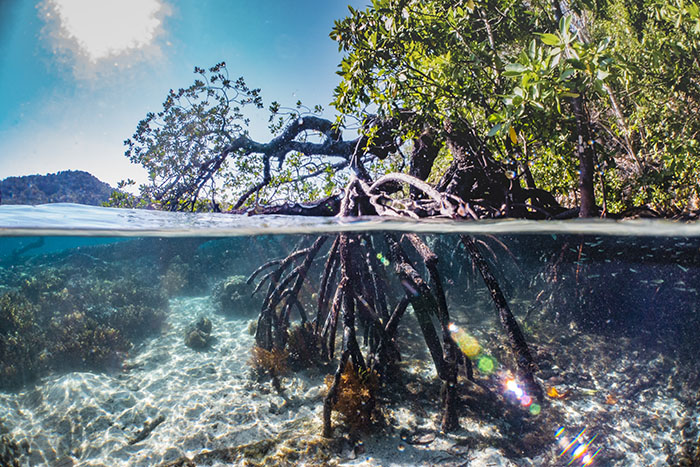New microbes discovered in bharals, sea lions and mangroves
Posted on June 9, 2021 by Matt Bassett
Each month, the Microbiology Society publishes the International Journal of Systematic and Evolutionary Microbiology (IJSEM), which details newly discovered species of bacteria, fungi and protists. Here are some of the new species that have been discovered and the places they’ve been found.
New microbes are always being discovered in animals and this month was no different. Corynebacterium qintianiae was discovered by a group of scientists conducting research on the Qinghai-Tibet Plateau. The yellow, rod-shaped microbe was found from the lung tissue of a Bharal (Pseudois nayaur). Bharals, also known as blue sheep, are members of the subfamily Caprinae native to the Himalayan Mountain range. Caprines, or goat-sheep as they’re informally known, are mostly medium-sized bovids. The same research group discovered another bacterium from the Corynebacterium genus; Corynebacterium lizhenjunii. This pale-yellow microbe was isolated from the respiratory tract of the Himalayan marmot (Marmota himalayana), a marmot species that lives throughout the Himalayas and on the Tibetan Plateau.

Researchers discovered two new members of the Streptococcus genus. The term Streptococcus was coined in 1877 and currently has over 50 species within the genus. The research group discovered Streptococcus vicugnae from the faeces of alpacas (Vicugna pacos) and cattle (Bos taurus). They also discovered Streptococcus zalophi and Streptococcus pacificus from the respiratory tract of California sea lions (Zalophus californianus).

It wasn’t just mammals that yielded new microbes this month. A group of researchers isolated Acinetobacter pollinis, Acinetobacter baretiae and Acinetobacter rathckeae from floral nectar and honey bees (Apis mellifera) collected on the Stanford University campus.
Eisenia foetida are a species of earthworm. After consuming and digesting organic matter they expel it onto the soil surface creating ‘wormcasts’. Researchers isolated Sphingobacterium lumbrici from these casts. Colonies of S. lumbrici were described as round, sticky, opaque and yellowish.
Mangroves are a key, yet incredibly threatened, ecosystem; they are very important carbon storage systems, provide nursery areas for juvenile fish and trap sediments from entering the sea, stabilising the coastline and preventing erosion, this has the additional benefit of protect coral reefs and seagrass from being smothered by sediment. Researchers isolated a new species from the sediment of a mangrove forest, naming it Thalassobius mangrovi after the ecosystem.

Psuedomonas is a genus of bacteria classified at the end of the 19th century. They are very widespread but the most commonly known is P. aeruginosa, causing huge problems due to its resistance to many antibiotics. Researchers isolated a new species of Pseudomonas; P. quercus. This new species was isolated from leaf spot disease of Mongolian oak (Quercus mongolica) an oak species native to Japan, China, Korea, Mongolia, and Siberia.
The last species this month was isolated from a human. Researchers isolated Mycobacterium vicinigordonae from the sputum of a Chinese male. The genus Mycobacterium includes bacteria that can cause serious diseases, including tuberculosis and leprosy.
The full papers describing these species are available to journal subscribers, but the abstracts are free to read. Articles can also be purchased individually with the pay-per-view option.

